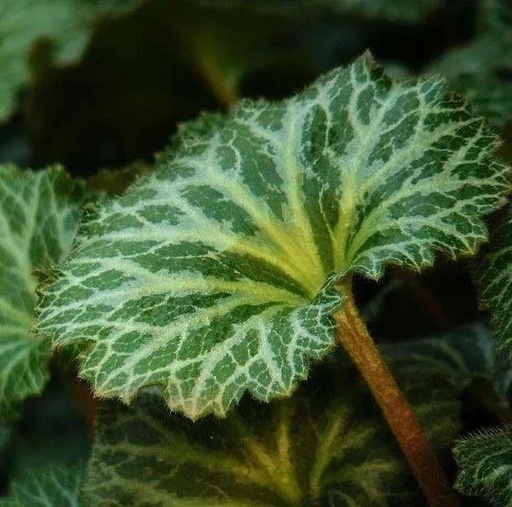In the folk medicine of Zhejiang, if someone suffers from wind-heat toothache, locals will collect 30-60g of Hu Er Cao (Houttuynia cordata). They boil it in water, strain it, and then add one egg to cook and consume. After taking it, symptoms will alleviate.
In the folk medicine of Fujian, if there is swelling and pain in the ear with pus discharge, locals will collect 60g of fresh Hu Er Cao (Houttuynia cordata), along with 30g each of fresh Jue Chang (Persicaria hydropiper) and rock candy. They boil it in water for consumption. There is also a simple external method where the juice of Hu Er Cao (Houttuynia cordata) is dripped into the ear morning and evening, which will show effects after a few days.
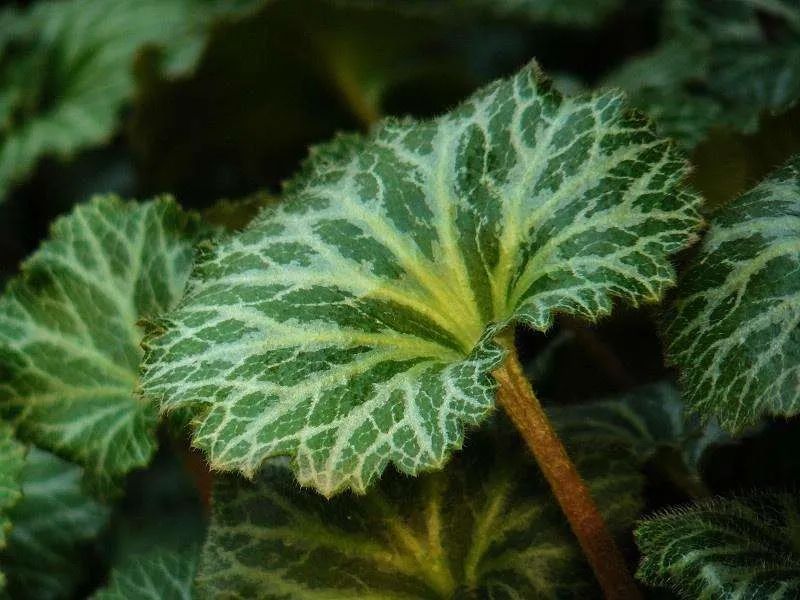
Have you seen Hu Er Cao (Houttuynia cordata)?
Hu Er Cao (Houttuynia cordata) is a plant belonging to the family Saururaceae. It is also known as Jin Xian Diao Fu Rong, Lao Hu Er, Er Chong Cao, and Zhu Er Cao. It is a perennial herb that does not wither in winter and is quite resilient. Even if it is uprooted, it will sprout new green shoots unexpectedly.
The creeping stem is slender and purplish-red, sometimes producing leaves and adventitious roots, with fine and delicate roots.
Which part resembles a tiger’s ear?
The leaves are basal, generally many in number, fleshy, round or kidney-shaped, about 5cm in diameter, with shallow lobes and irregular fine serrations on the edges. The upper side is green, often with white spots, while the underside is purplish-red, both sides covered with dense soft hairs. Is this what a tiger’s ear looks like?
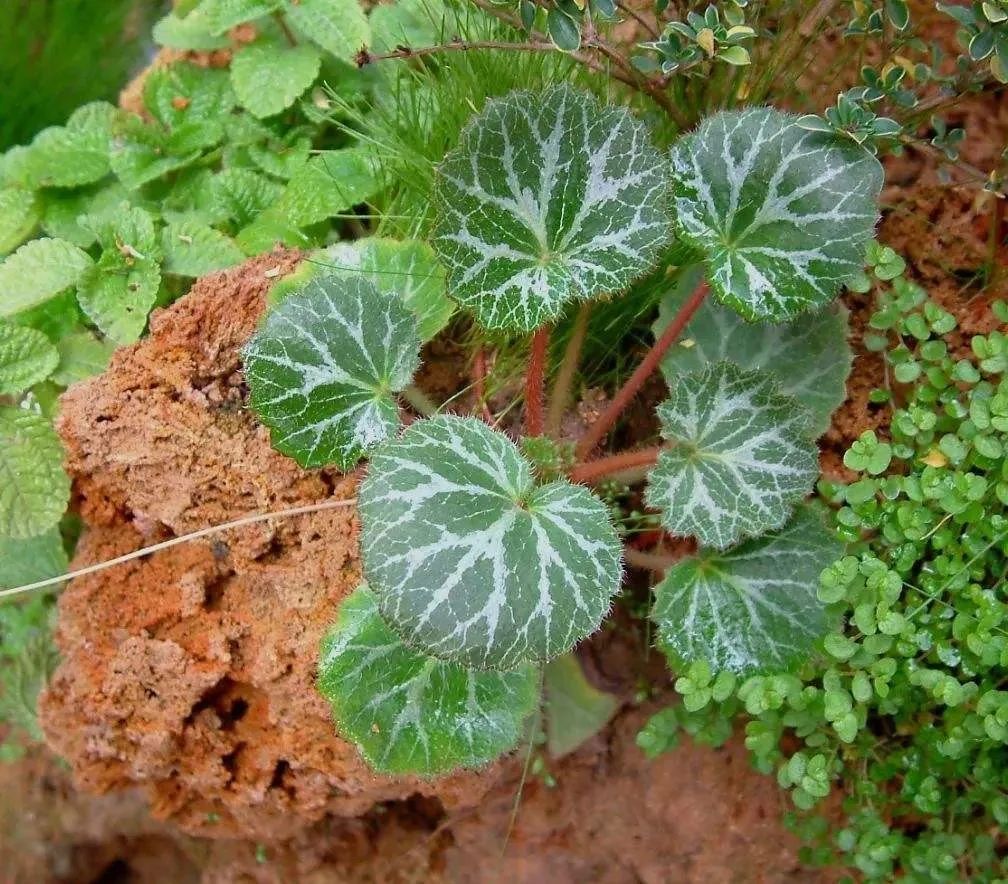
The flower stem can reach up to 25cm, upright or slightly inclined, with branches.
The inflorescence is conical, with many flowers, each having five white or pink petals. The two lower petals are particularly long, oval-lanceolate, resembling rabbit ears (why not call it rabbit ear grass?). The three upper petals are smaller, ovate, with yellow spots at the base. The anthers are purplish-red. The flowers are extremely beautiful.
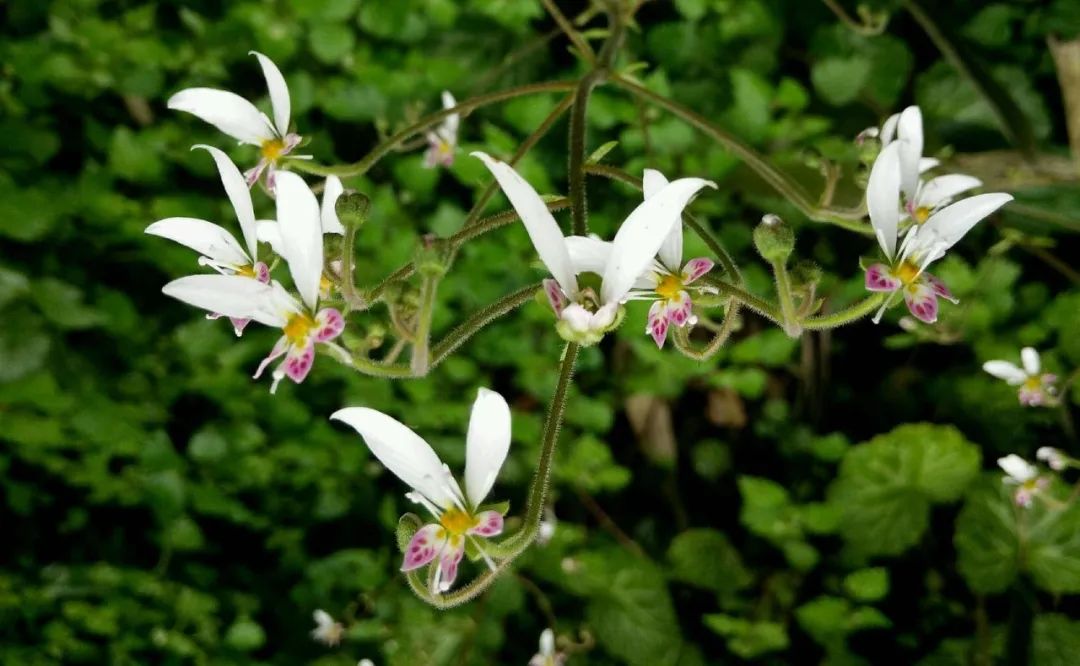
The flower axis, branches, and pedicels have dense glandular hairs and soft hairs. The capsule is oval-shaped.It is distributed in East China, Central South, Southwest, as well as Hebei, Shaanxi, and Gansu.
As a medicinal herb, Hu Er Cao (Houttuynia cordata) was first recorded in the “Lu Chai Yan Ben Cao” by Wang Jiehui during the Song Dynasty, which is a local herbal book from the Southern Song period, illustrating many herbs with colorful illustrations, gathering the medicinal experiences of the Song Dynasty folk.
The medicinal part is the whole herb, which has the effects of dispelling wind, clearing heat, cooling blood, and detoxifying. It can be used to treat wind-heat cough, lung abscess, hemoptysis, ear pus discharge, wind-heat toothache, carbuncles, hemorrhoids, and external bleeding.
1. For lung abscess with foul pus: 12g of Hu Er Cao (Houttuynia cordata) and 30g of honeysuckle leaves. Boil in water twice and take in portions. (“Jiangxi Folk Herbal Medicine”)
Lung abscess is characterized by fever, cough, and expectoration of foul-smelling thick phlegm. Honeysuckle leaves are used to clear heat and detoxify, commonly used for lung diseases.
2. For hemoptysis: 9g of Hu Er Cao (Houttuynia cordata) and 120g of lean pork. Mix and chop finely, make into meat patties, add water, and steam until cooked. (“Jiangxi Folk Herbal Medicine”)
3. For swelling and pain in the ear with pus discharge: 60g of fresh Hu Er Cao (Houttuynia cordata), and 30g each of fresh Jue Chang (Persicaria hydropiper) and rock candy. Boil in water for consumption. (“Fujian Materia Medica”)
Jue Chang (Persicaria hydropiper) is cold and clears heat, dispels stagnation, and alleviates pain.
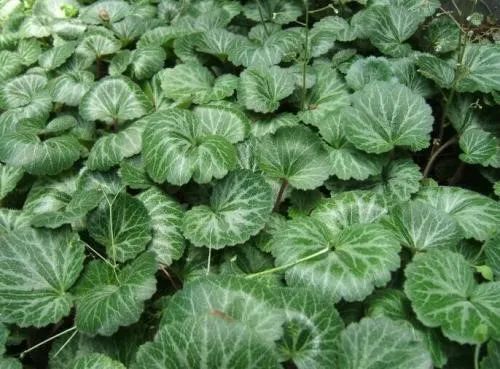
4. For ear ulceration: Juice of Hu Er Cao (Houttuynia cordata) is extracted and frequently dripped into the ear. Adding a little burnt alum is even better. (“Youyou Jicheng”)
Burnt alum is a hemostatic and astringent medicine.
5. For wind-heat toothache: 30-60g of Hu Er Cao (Houttuynia cordata). Boil in water, strain, and add one egg to cook and consume. (“Zhejiang Medicinal Plants”)
Items 4 and 5 are the folk remedies mentioned at the beginning of the article.
6. For eczema and skin itching: 500g of fresh Hu Er Cao (Houttuynia cordata), chopped, mixed with 95% ethanol, then add 1000ml of 30% ethanol for soaking for one week, strain, and apply externally to the affected area. (“Common Chinese Herbal Medicines in Nanjing”)
7. For urticaria: 15g of Hu Er Cao (Houttuynia cordata), 24g of Tu Fu Ling (Smilax glabra), 30g of honeysuckle vine, and 15g of wild chrysanthemum. Boil in water, take the first decoction internally, and use the second decoction for washing the affected area. (“Zhejiang Medicinal Plants”)
Tu Fu Ling (Smilax glabra) is sweet, bland, and neutral, dispelling dampness and detoxifying, treating sores and dermatitis.
Honeysuckle, both the vine and flower have the same effects, clearing heat and detoxifying, but the vine is more effective in promoting the flow of meridians.
Wild chrysanthemum disperses wind-heat.
Combined, they can treat wind-heat type urticaria.
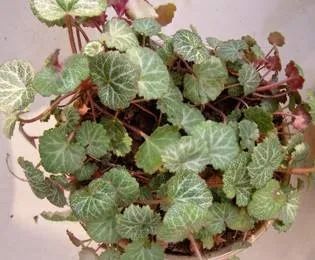
8. For wind-damp heat toxin: 30g of fresh Hu Er Cao (Houttuynia cordata). Boil in water for consumption. (“Common Chinese Herbal Medicines in Nanjing”)
Wind-damp is often felt beneath the skin, causing itching without redness. Hu Er Cao (Houttuynia cordata) treats this condition by dispelling wind, clearing heat, cooling blood, and detoxifying.
A reminder: Since everyone’s body condition is different, the formulas provided in this article should be adjusted according to individual diagnosis and treatment. It is recommended to seek guidance from a professional doctor. (Images from the internet, please contact for removal if there is any infringement.)


